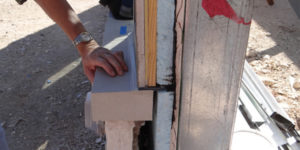At a three-story office building built in the 1980s, interior water leakage routinely occurred on the second floor. Typically observed during wind-driven rain, it resulted in wetting of interior finishes and subsequent mold growth.
+ Read More
|
Designed to dynamically respond to changing light conditions, smart windows are among the most advanced façade components. However, most of these products do not live up to their descriptor—after all, if they are not connected to the Internet, how smart can they really be?
+ Read More
|
As we have learned through our Construction Documents Technologist (CDT) studies, the four Cs of effective construction specifications involve being clear, concise, correct, and also complete.
+ Read More
|
Glazed brick has had a love/hate relationship with the real estate, design, and construction community for well over a century. In 2011, the New York Times ran an article in the real estate section stating that during the middle of the last century, “glazed brick was supposed to make...
|
Decades ago, abrasive cleaning of façades typically involved application of sand or aluminum oxide media against building walls at high pressures (i.e. 5516 kPa [800 psi] or more).
+ Read More
|
The concrete industry has a global impact that continues to evolve. As technology advances and construction practices grow and change, it is imperative those working in the field meet a certain standard of work.
+ Read More
|
Distinguished Membership is the most prestigious honor that can be bestowed by CSI. The Institute Board of Directors confers this status on those who have performed exemplary services to the construction industry in fields of activity related to the association’s purposes.
+ Read More
|
A senior manager in the commercial construction industry narrates her experiences as a woman in a male-dominated industry, the challenges she faced, and how she worked harder and smarter to break the innumerable glass ceilings in the industry.
+ Read More
|
When an exterior wall leaks, rots, or falls down, scrutiny of the design and construction can be expected to focus on the inevitable question: whose fault was it?
+ Read More
|
Millennials currently represent 25 percent of the entire U.S. population. Born between 1977 and 2000, they also represent 21 percent of the discretionary purchasing power in the country. They are the largest generation to enter the workplace.
+ Read More
|
|
|














